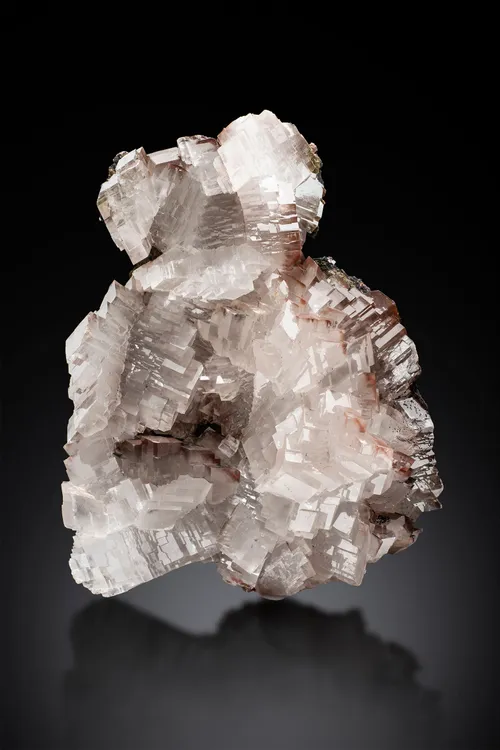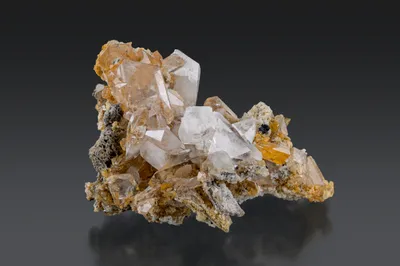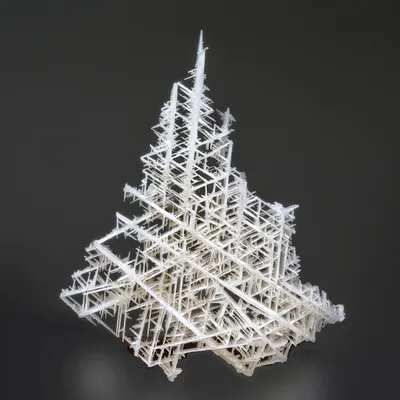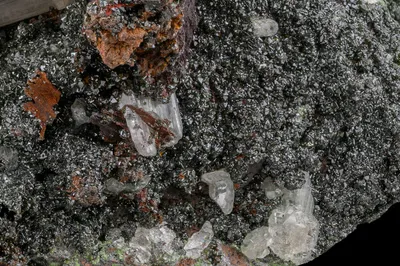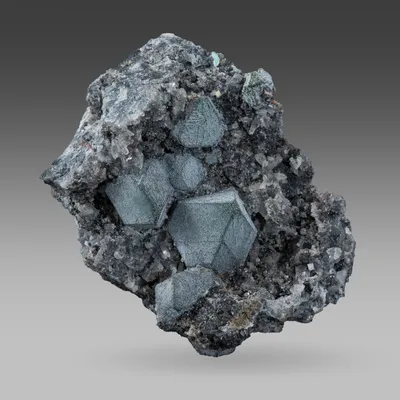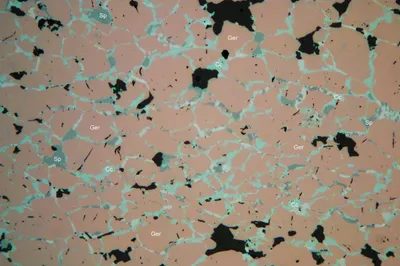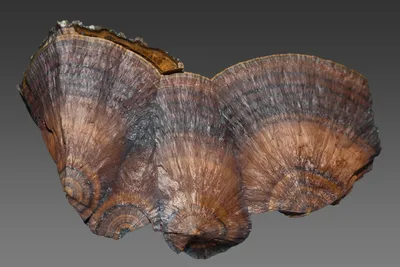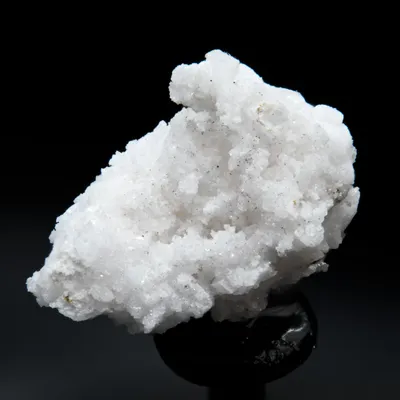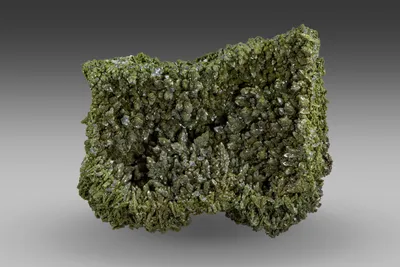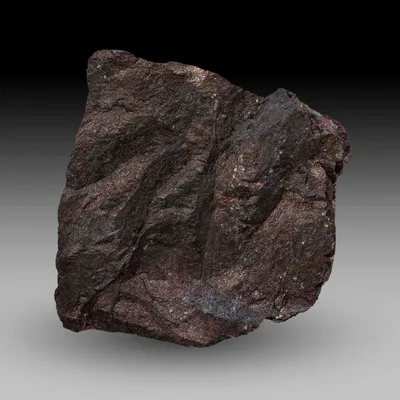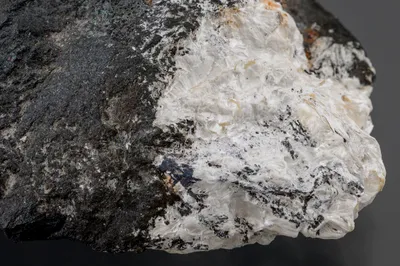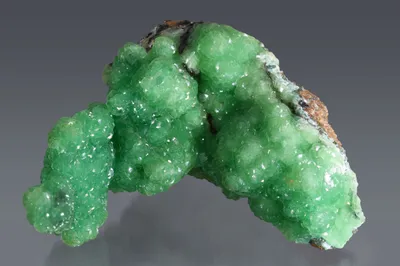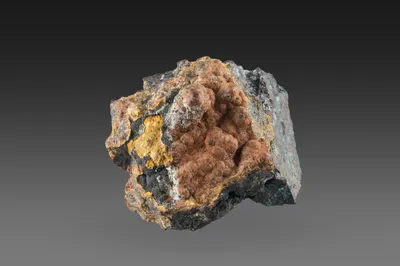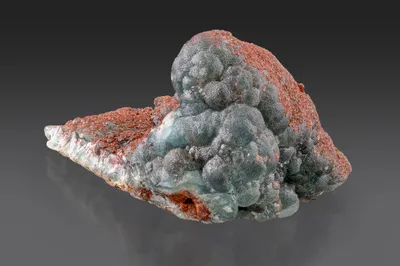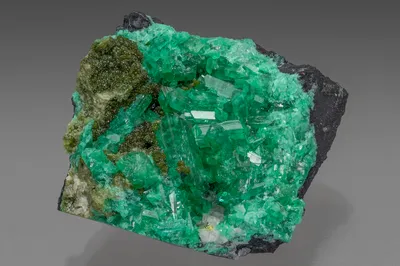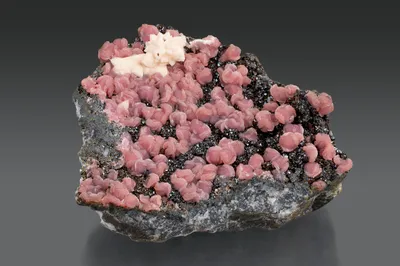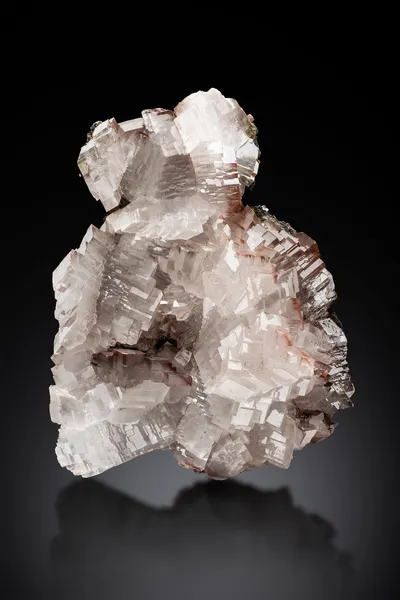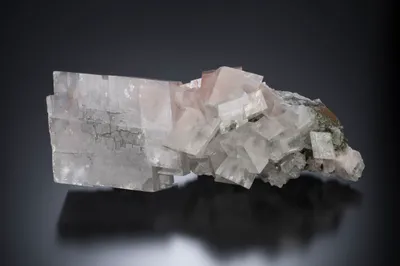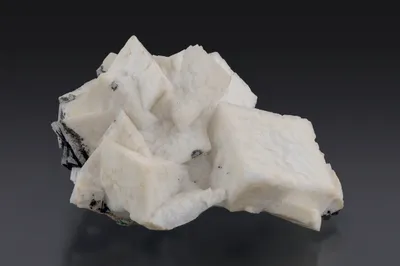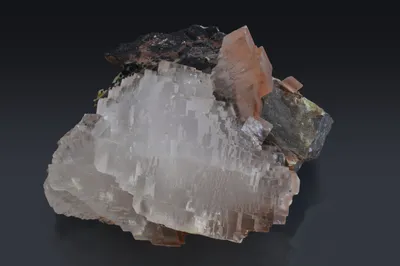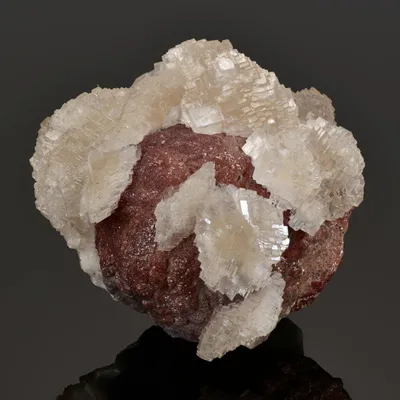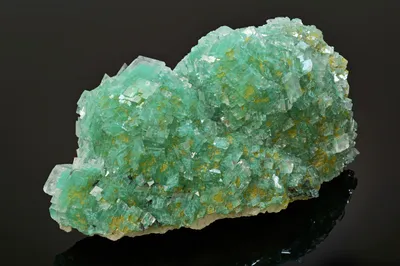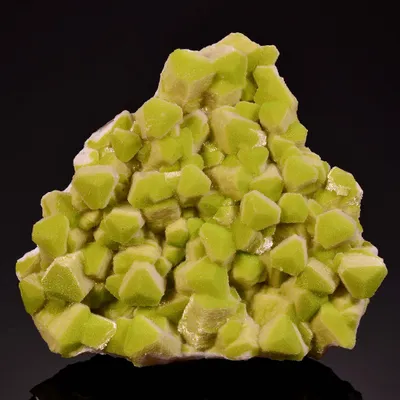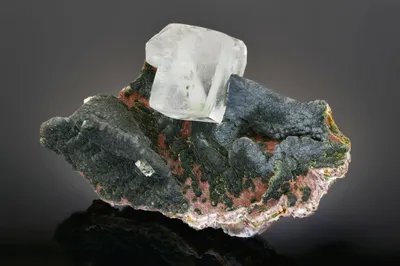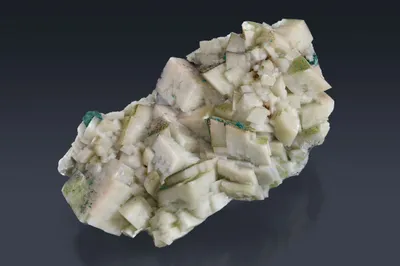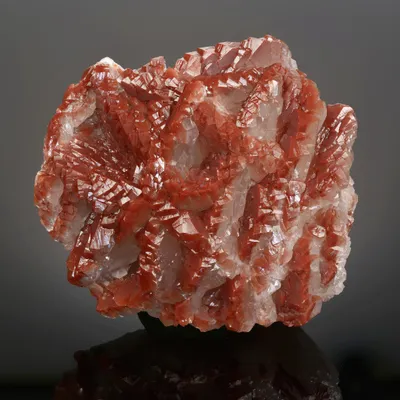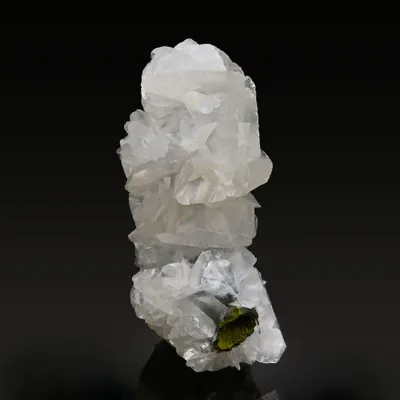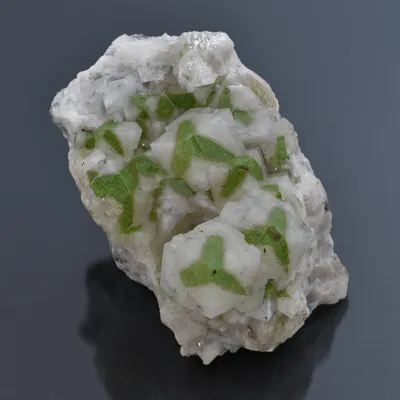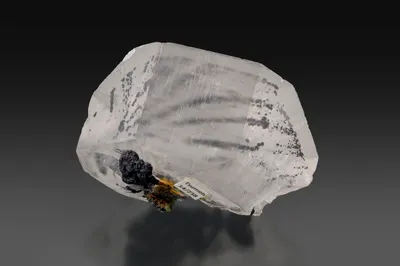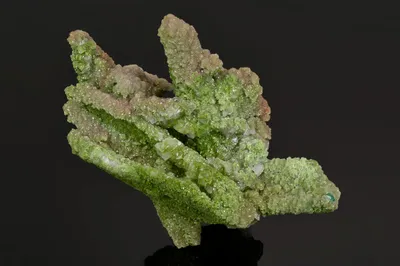
Image Credit: Jeff Scovil
Mineral Species
Calcite
Type Locality
No
Composition
CaCO3
Crystal System
Trigonal
Status at Tsumeb
Confirmed
Abundance
Very common
Distribution
First, second and third oxidation zones, sulphide ores, country rocks (dolostone stratigraphy, feldspathic sandstone)
Paragenesis
Rock-forming (diagenetic); hypogene; supergene
Entry Number
Species; TSNB66
General Notes
Calcite is almost ubiquitous at Tsumeb, occurring as a component of the host-rocks, as a product of (hypogene) mineralisation and associated alteration (calcitisation), and as the result of (supergene) oxidation processes in the secondary mineral assemblage. The latter process has generated a vast variety of habits, colours and associations, with crystals up to 30 cm. The overwhelming majority of specimen-quality calcite is of secondary origin.
At its simplest, secondary calcite occurs as a monomineralic lining or encrustation of intergrown, colourless-white rhombs in karstic cavities or on other surfaces. The more attractive specimens, however, tend to result from the crystallisation of calcite as part of a sequence involving other secondary minerals; calcite crystals containing inclusions of other minerals (such as duftite or hematite), or forming the matrix for brightly coloured species (such as dioptase) are highly sought after.
Most Tsumeb calcites comprise rhombohedral forms, while prisms, pinacoids and scalenohedra are rarely observed (Keller, 1984).
Gebhard (1999) suggests that calcite "… is associated with nearly all other minerals"; it is notable, however, that minerals forming under relatively low pH conditions (such as adamite, anglesite, beudantite, carminite, linarite and olivenite) are much less commonly found in direct association with calcite.
Moore (2016) considers Tsumeb to be "… one of the top ten or so localities in the world for fine specimens of crystallised calcite." However, early collections contain notably few examples of calcite and, while this observation partly reflects the collecting prejudices of the time, it is hard to dismiss the implication that attractive calcite specimens were somewhat less common in the upper levels of the mine.
Collectable calcites were commonly encountered at depth, however, including the distinctive specimens from two named pockets:
- The so-called "Ice-cream Pocket", discovered in 1977 and believed to be from the second oxidation zone, comprising very pale pastel-green rhombs of calcite, but with a sugary surface texture, suggesting either a degree of recrystallisation or perhaps a replacement of dolomite (?).
- The so-called "Crystal Palace", a very large walk-in pocket of rhombohedral calcites associated with conichalcite, discovered in December 1990 on 43 Level, No.1 sub-level, in the third oxidation zone (Anon. 1991; Gebhard, 1999).
Guse (1982) described a specimen of calcite from the East 35 Stope, 28 Level, No.1 Sub-level, in which "… the white [calcite] matrix is interrupted by blue bands…". Analysis of the blue material (by AAS) determined the presence of 0.167 wt % copper, while XRD analysis yielded only the diffraction lines of calcite. The blue colour was therefore attributed to the minor substitution of copper for calcium in the calcite lattice (as opposed to inclusions of a separate copper-containing mineral).
Gliddon (1991) reported a discovery of "… exceptional elongated water-clear crystals in a variety of sizes from hand specimen to large cabinet with crystals to 27 cm" from the North Stope on 42 Level in the third oxidation zone.
Tsumeb calcites are typically unresponsive to UV light. However, a few Tsumeb calcites present a reddish fluorescent response and, probably by allusion to other occurrences of fluorescent calcite, there has been a tacit inference that this is due to the presence of manganese. Lombaard et al. (1986), however, noted the occurrence of a "… red-fluorescing calcite" containing 0.28 wt % cadmium.
Associated Minerals
adamite; agardite-(Ce); albite; almandine; anglesite; ankerite (?); anorthoroselite; aragonite; arsenbrackebuschite; arsenohopeite; arsentsumebite; azurite; betekhtinite; biotite series; bornite; brucite; cerussite; chalcocite; chalcophanite; clinochlore; clausthalite; conichalcite; copper; coronadite; cuprite; descloizite; dioptase; dolomite; duftite; epidote; eugenite; fahleite; ferrilotharmeyerite; fluorapatite; fluorite; galena; germanite; goethite; goudeyite (?); gypsum; hedyphane; hematite; hemimorphite; heterogenite (?); hydrocerussite; hydrozincite; ilmenite; lavendulan; malachite; mendipite (?); microcline; mimetite; minium; minrecordite; molybdofornacite; montmorillonite; mottramite; muscovite; ojuelaite; olivenite; orthoclase; otavite; otjisumeite; parkinsonite; plancheite; pyrite; pyrrhotite (?); quartz; renierite; romanèchite (?); rosasite; rutile; schaurteite; sepiolite; silver; smithsonite; söhngeite; spertiniite; sphalerite; sulphur; sulvanite; tangeite (?); talmessite; titanite; tourmaline supergroup; tsumcorite; vésigniéite (?); willemite; witherite; wulfenite; wurtzite; zincolivenite; zircon
Pseudomorphs
Calcite has been reported to form pseudomorphs after the following minerals: cerussite (rare); galena (rare); mimetite (rare).
The following minerals have been reported to form pseudomorphs after calcite: conichalcite (rare); descloizite (rare, doubtful status); dolomite (common, often as epimorphs); galena (rare); mottramite (rare); smithsonite (rare, doubtful status).
